The multimeter, multitest or VOM (Volt Ohm Milliammeter) is a test instrument capable of measuring voltages, resistances (Ω) and currents (milliamps).
Equipped with various scales and a switching system for its probes, this device measures practically everything we need to know if a circuit or a component is good or not.
For students, hobbyists and even beginner technicians, there are many types of affordable and very useful multimeters like the model shown in Figure 1.
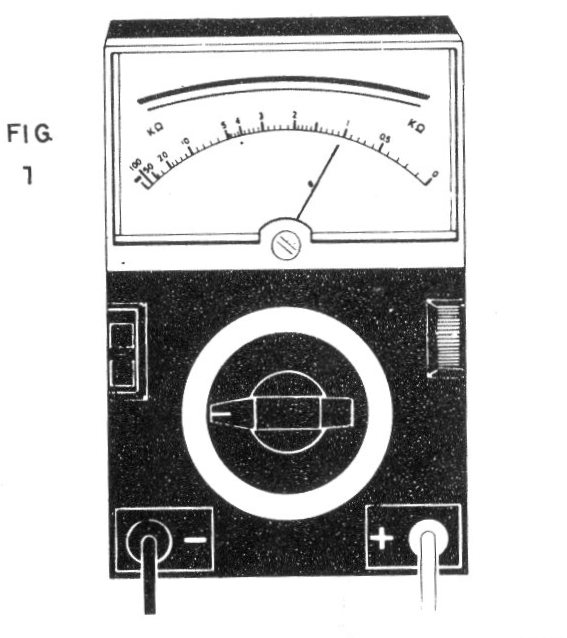
Note: this was a common analog type at the time. Nowadays we have digital types that measure much more than voltages, currents and resistances.
Having a multimeter, the reader who knows how to use it will have a much easier way of determining the state of the components and circuits.
If the reader has a multimeter, here are some important measure techniques that can be proven with experiments.
Do as indicated in each case, to know your multimeter and know how to read its scales.
The multimeter
The multimeter is basically formed by a mobile coil galvanometer, of great sensitivity and precision, connected to a switched circuit that depends on what you want to measure.
Note that it is not convenient to attempt to build this type of appliance for the following reasons:
A) The precision galvanometer can not be found easily in the specialist trade, and if it is, it can even cost more than a ready-made multimeter!
B) The switch used, or contacts for the probes, must be of special type (silver) to provide the least possible resistance, and are not easily found.
Without them the built instrument does not show the desired precision.
C) Finally, the components of the circuit must have accuracy of at least 1 or 2%, which raises its cost and makes it difficult to be obtained. Without them, the instrument has the accuracy of the component used, and the component may not meet the desired purpose.
Resistance measurements
To measure resistances is very simple: choose a scale according to the resistance you expect to read. For example, to read a resistance of 10k (10,000 Ω) you will place the instrument on the Ω x 100 scale, as this will have a deflection (needle movement) in the central region where the accuracy is greater. If you want you can use the Ω scale x 1k (x100).
In the first case, the pointer should go up to 100, as 100 x 100 = 10,000: and in the second case, up to 10, because 10 x 1000 = 10,000.
Before making the measurement, you should always "reset" the multimeter, which is done by touching one probe in the other and adjusting the "Zero Adj" to read 0. (figure 2)
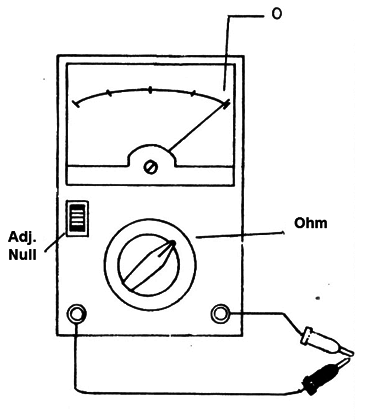
Then you can measure the resistance, as shown in Figure 3.
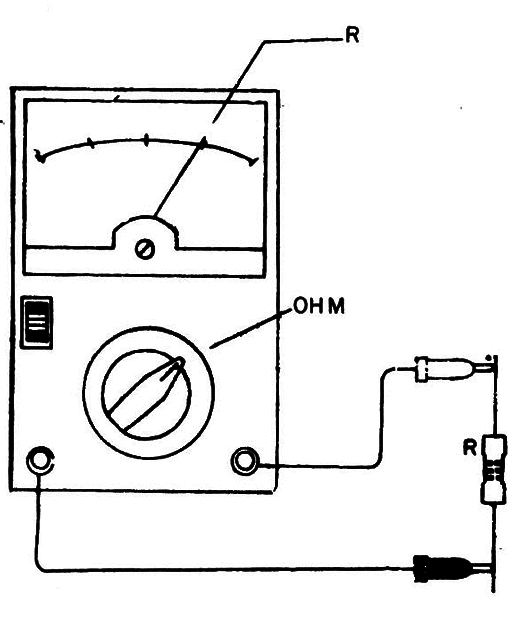
Note that the measurement of a resistance must always be done "out of the circuit", ie, the component must be "off".
Common carbon or carbon resistors tend to "open", that is, when they are bad, their value increases in relation to what is expected, or else it has infinite resistance.
Take a handful of resistors from your stock and check their resistance using the multimeter. With this procedure, you will learn to read the scale of your instrument.
Potentiometers and trimpots
We can test a trimpot or potentiometer easily, using the multimeter.
In a first operation, we measured its resistance "end to end" as shown in Figure 4.
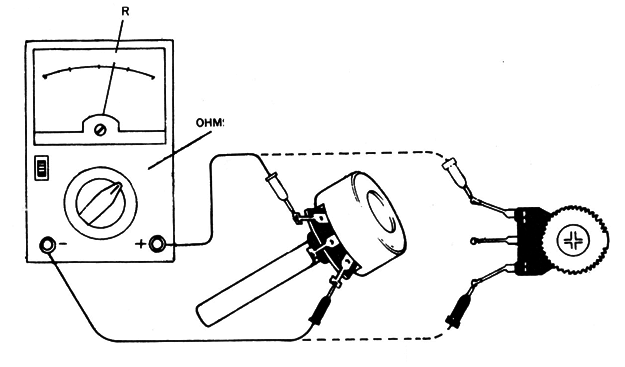
The read value must be that of the (nominal) component. Thus, a 47 k trimpot should measure 47 k in this test and a potentiometer of 1 M should measure 1 M.
If the value is infinite, the component is burnt (open).
Then we pass the pointer test (if it passes the previous one). For this, we proceed as shown in Figure 5.
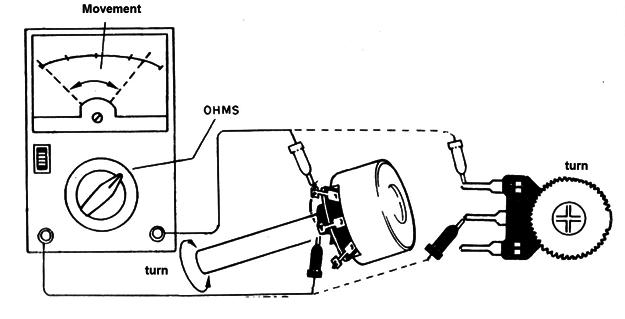
By turning the trimpot or potentiometer pointer, the resistance should vary smoothly between 0 and the nominal value, ie, the one obtained in the previous test. If sudden jumps occur it is because the potentiometer or trimpot is dirty or with contact problems.
If nothing is observed (infinite resistance), it is because the trimpot or potentiometer is opened.
Diodes
Diodes in good condition should conduct current in one direction and block in another. We can check if a diode is actually doing this and therefore determine its state by using the multimeter.
The procedure is shown in Figure 6.
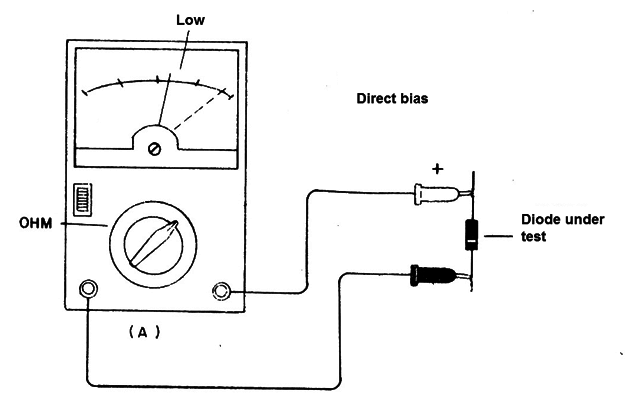
Using the intermediate range of resistances (OHM x 100, for example), we measure the resistance first in one mode and then invert the probes.
For a good diode, we will have a low resistance reading and a high resistance reading.
If the two readings are high resistance, we say the diode is open and it is not good for use. If both resistors are low, we say that the diode is shorted, and it is also useless.
Transformers and coils
We can verify if the windings of transformers and coils are in good condition, that is, they have continuity, measuring their resistance, as shown in Figure 7.

The resistance should be low, the lower the thicker the winding wire and the fewer the turns. Resistance can normally range from 0 to 1,000 Ω.
If an infinite resistance is observed, it is because the winding is interrupted. Unfortunately, if the winding is short, it will not be possible to check this with the Meter.
Measuring tensions
To measure voltages in a circuit, the procedure is shown in Figure 8.
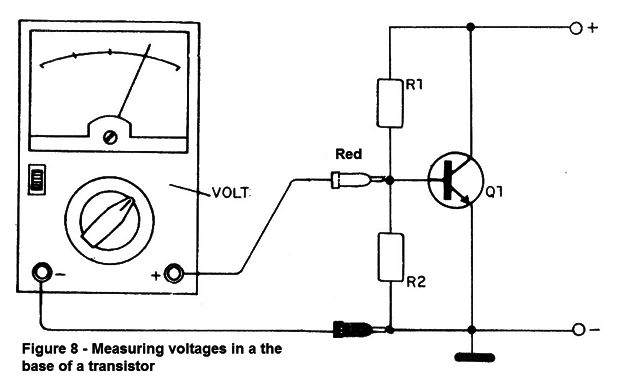
The black end must be grounded (if it is the negative pole of the battery) and the red end is pressed against the point where the voltage is wanted. The scale of the multimeter is chosen according to the voltage you are expected to find.
It should also be checked whether the measured voltage is really continuous (DC or DC).
In Figure 9, we give the procedure to measure the voltage of an alkaline battery.
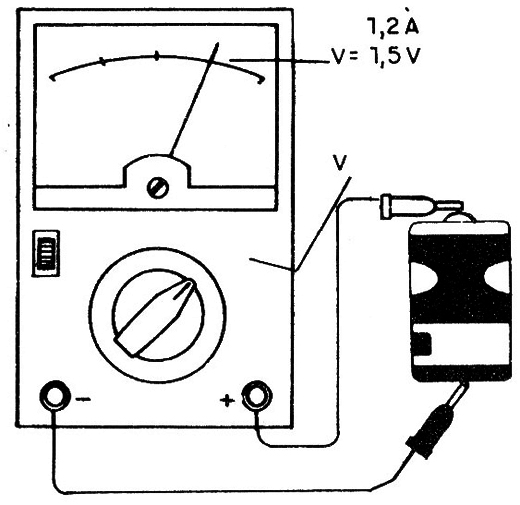
It is not the best way to test a battery, since there are cases where we have above 1.2V measured in this test, but the battery has a high internal resistance, which manifests itself when we connect it in a circuit.
In these conditions, when we put the battery into operation, its voltage drops to inadequate values.
Conclusion:
Using your multimeter, you can find out a lot about components and circuits. We will return in due course with more evidence and experiences involving this instrument.




